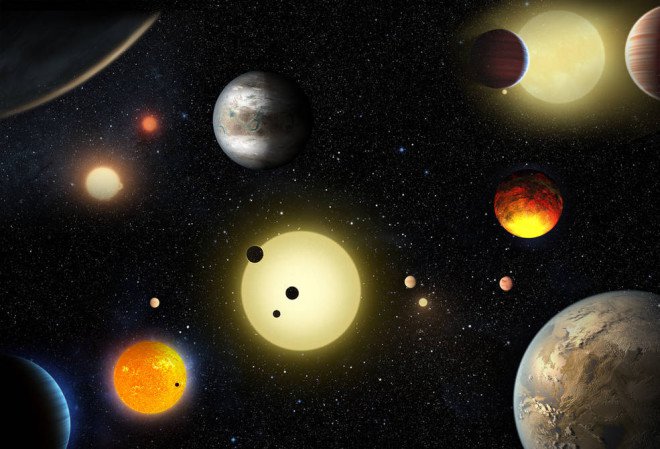
May 12, 2016
Feature Story
A Flood of Newly Confirmed Exoplanets

Artist's rendering of exoplanets previously detected by the Kepler Space Telescope (NASA)
In the biggest haul ever of new exoplanets, scientists with NASA’s Kepler mission announced the confirmation of 1,284 additional planets outside our Solar System — including nine that are relatively small and within the habitable zones of their host stars. That almost doubles the number of these treasured rocky planets that orbit their stars at distances that could potentially support liquid water and life.
Prior to today’s announcement, scientists using Kepler and all other exoplanet detection approaches had confirmed some 2,100 planets in 1,300 planetary systems. So this is a major addition to the exoplanets known to exist and that are now available for further study by scientists.
These detections comes via the Kepler Space Telescope, which collected data on tiny decreases in the output of light from distant stars during its observing period between 2009 and 2013. Those dips in light were determined by the Kepler team to be planets crossing in front of the stars (rather than impostors) to a 99 percent-plus probability.
As Ellen Stofan, chief scientist at NASA Headquarters put it, “This gives us hope that somewhere out there, around a star much like ours, we can eventually discover another Earth.”

The histogram shows the number of planet discoveries by year for more than the past two decades of the exoplanet search. The blue bar shows previous non-Kepler planet discoveries, the light blue bar shows previous Kepler planet discoveries, the orange bar displays the 1,284 new validated planets.
(NASA Ames/W. Stenzel; Princeton University/T. Morton)